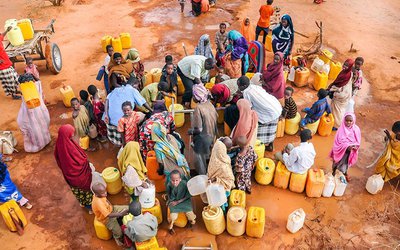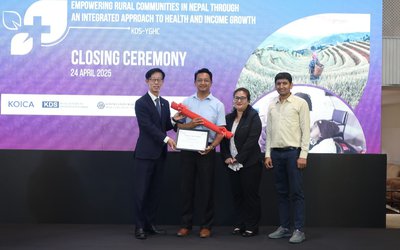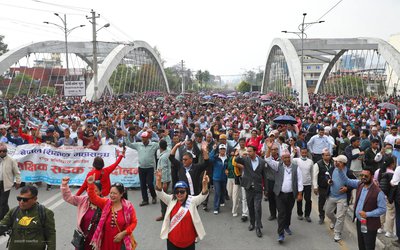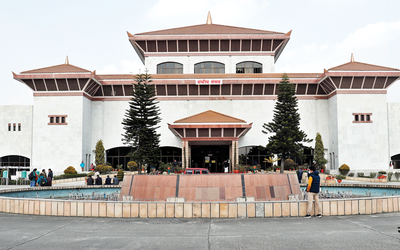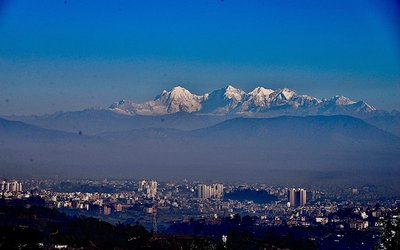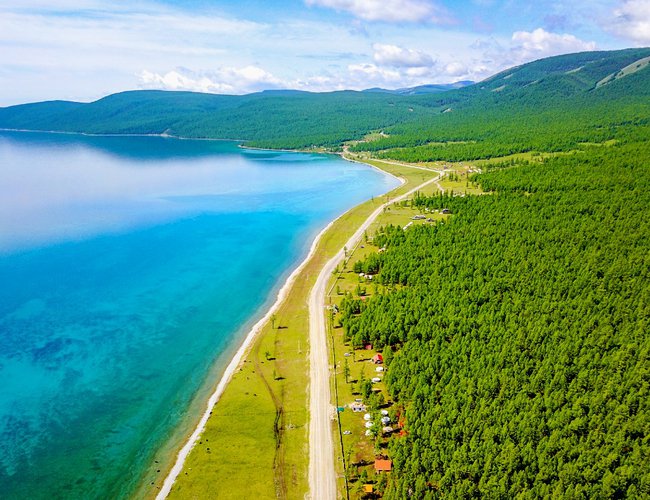
Asia and the Pacific have emerged as climate crisis hotspots, experiencing a series of record-breaking climate-related disasters. In 2022 alone, India faced extreme temperatures and fatal heatwaves, Bangladesh's Haor area endured flooding, the People's Republic of China grappled with devastating droughts, and Pakistan dealt with flooding. These interconnected and spatially distributed events serve as clear evidence of climate change and a wakeup call for the region in 2023 and beyond.
While extreme climatic factors like high-intensity rain or excessive heat often dominate discussions about climate change, it is important to recognize that even seemingly minor changes in temperature, rainfall, typhoon location, tidal height, or sea level rise can have significant consequences. Therefore, small temporal, spatial, and magnitude shifts in these factors can trigger severe disasters, including glacial lake outburst floods, large magnitude river floods, permanent salt intrusion, excessive soil erosion, and agricultural droughts or flooding.
Addressing the complex and interconnected nature of climate-related problems requires a comprehensive approach to development planning. Some solutions, based on lessons learned from the past, may not always be effective or compatible with emerging situations. Nevertheless, it is essential to recognize the interdependence of climate change issues and understand how solutions implemented in one sector can lead to problems in other sectors or areas.
Effective climate change adaptation planning must account for spatial, functional, and institutional integration. This includes acknowledging the potential for maladaptation in poorly planned and designed infrastructure, which can exacerbate existing climate change issues or create new ones.
The investment decision-making should include inclusive practices for effective climate change adaptation planning, as they ensure that climate change adaptation is not merely an afterthought in the development process. By involving the perspectives and needs of all stakeholders, including marginalized groups and communities, more holistic and effective solutions can be devised.
Analyzing and learning from past climate events, such as the flooding in Bangladesh's Haor area in 2021 and 2022, can help identify patterns and triggers for future disasters. This information can be used to develop more effective strategies to address climate change risks.
The combined effects of poor land-use practices and climate change can dramatically increase the risks of floods and droughts. Integrating land-use planning with climate change adaptation strategies is vital to effectively mitigate these risks and protect vulnerable communities.
ature possesses an inherent ability to adapt to a certain degree of change. However, due to human-induced factors like deforestation, land encroachment, pollution, and overexploitation of natural resources, this natural resilience has been significantly diminished. To address these issues and build resilience, countries should prioritize regaining nature's lost immunity and implement solutions that are inclusive, cost-effective, and provide multifaceted benefits.
Addressing the complex and interconnected nature of climate-related problems requires a comprehensive approach to development planning.
The following six solutions can guide countries in their climate change adaptation planning.
Embrace Nature-Based Solutions: Countries should focus on revitalizing nature's immunity through nature-based solutions. This includes ecosystem-based adaptation projects such as restoring native forests and shrubs, recovering wetlands, and restoring drainage systems, which provide a variety of ecological services, including livelihood support.
Implement Built-With-Nature Solutions: Artificial measures to boost nature's immunity should be prioritized. These solutions go beyond merely restoring lost nature and enhance it through near-nature-based solutions such as temporary water retention areas, artificial wetlands, urban forests, rain interception or harvesting, porous surfaces, artificial sand dunes, or geotextile bags to combat riverbed erosion. Some gray infrastructure, like increasing river roughness to restore river morphology or using rock or concrete armors to protect against coastal erosion, also falls under this category.
Strengthen Protection Against Uncertainties: Extra protection is needed to prevent potential damage under uncertain conditions, which is often interpreted as climate and disaster risk management. This includes measures aimed at mitigating potential and residual risks, which encompass both structural and non-structural solutions such as early warning systems and risk retention or transfer solutions.
Address Human-Induced Errors in Sectoral Development: Countries must rectify the errors caused by maladaptation during sectoral development. While it is sometimes challenging to reverse developments and rebuild infrastructure, compensation using both structural and nonstructural solutions remains a viable solution in some cases. Maladaptation risks can be reduced through robust adaptation planning.
Build Resilience Within Individual Sectors: Countries should focus not only on protecting sectors but also on building resilience within each sector by mainstreaming climate and disaster risk management. For example, flood risk management on its own does not offer complete flood protection, but better planning and designing of sectoral developments can significantly mitigate flood risk. In this context, an integrated, participatory approach is crucial for success.
Adopt a Build Back Better Approach: In the face of climate disasters, the "build back better" concept offers an opportunity to mainstream climate change adaptation strategies by reducing the impact of natural disasters and ensuring communities are more resilient in the future.
The uncertainties of climate change call for actions driven by evolving scenarios and the best available knowledge, as well as meeting the financing needs of developing countries to realize potential solutions. Integrating adaptation into policy upfront is essential to achieve these goals.Link of ADB Blog and about Authors

